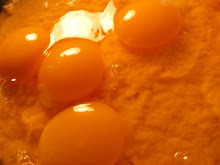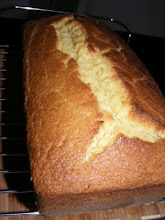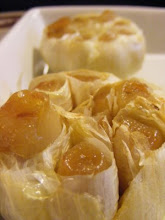Perpetually seasoned? What does that mean?! Let's find out.

This is my skillet after I cooked my mushrooms for the Wing Steaks. As you can see (despite the blurry photo for which I appologize) the pan is quite oily. That's a good thing when it comes to skillets. Actually, I could easily fry an egg in this skillet at this point and it would come off the iron just as easily as it would go on. But that's for another day.
What we want to do with this skillet now is remove the excess oil and the bits of food. We want to clean it without removing all of the oil and we want it to be sterile as well. There are two ways we can do this.
The first way is to add some salt into the skillet along with a little oil. A paste is created for cleaning. The salt acts as a sterilizer as well as an abrasive to remove any bits of food that may have stuck to the surface of the pan. I generally reheat my pan to a moderate heat, add the salt and oil and scrub is a little with a paper towel. Then I wipe the salt out of the pan with a clean paper towel and finish the surface off with a wipe of clean oil. The pan is then clean and oiled and ready to be put away.
The second way I clean my skillet is how I will show you here. Because I used the skillet for mushrooms rather than for meat or fish, I feel this option is safe for cleaning in this case.
Here's how I do it.

First I run the skillet under warm water. I use a scrubby to remove anything that may be clinging to the surface of the skillet. The most important this to remember her is this: DO NOT USE SOAP TO CLEAN A SEASONED SKILLET. NOT EVER! Just a little water and a scrubby will do.

Here you can see that the pan is clean. You can also see that there is still a film of oil on it. That is what we want at this stage.

Here the skillet is returned to the burner and is allowed to heat up to a moderate heat. This will allow the pan to thoroughly dry, will kill any bacteria and will allow the pores of the iron to open up for reseasoning.

A little oil is poured into the skillet and is allowed to heat. This will season the pan nicely which will protect the pan from rusting and will keep it non-stick.

The hot oil is wiped liberally over the surface of the skillet with a clean paper towel and is allowed to cool. Then the skillet can be put away until it is needed again.












































































































